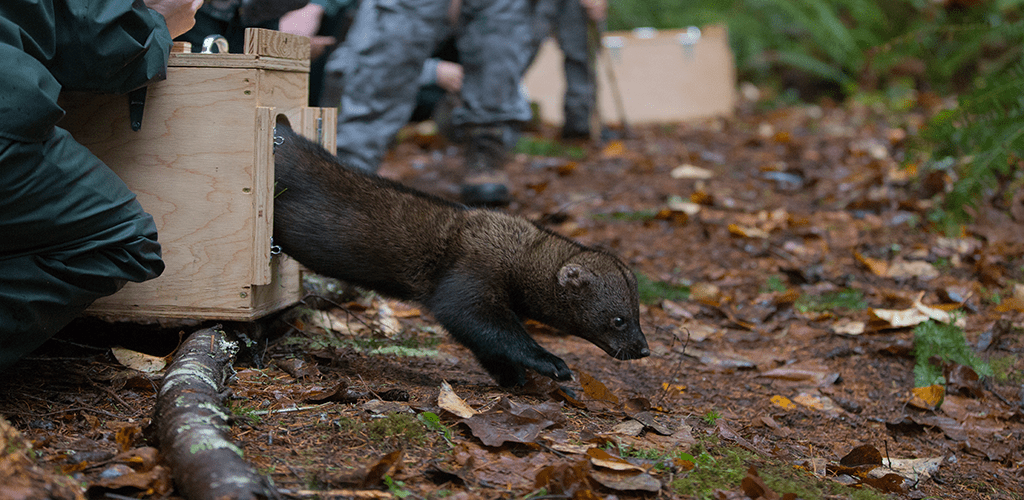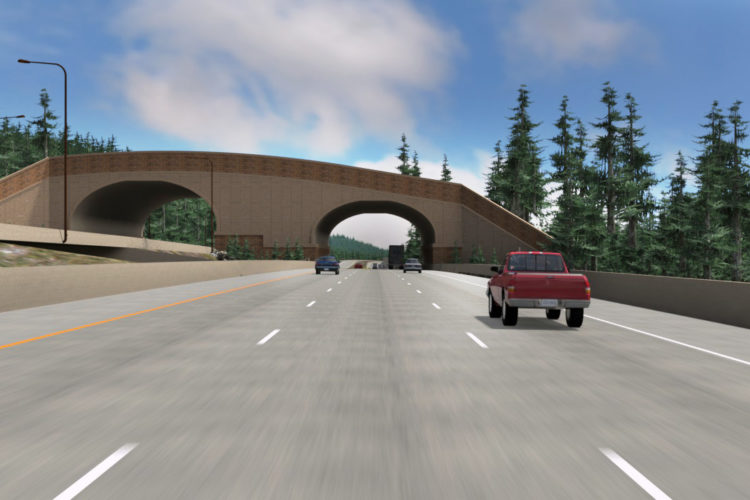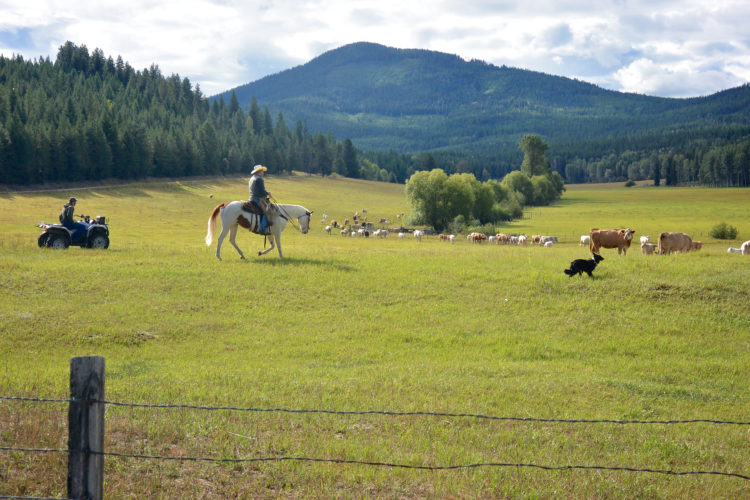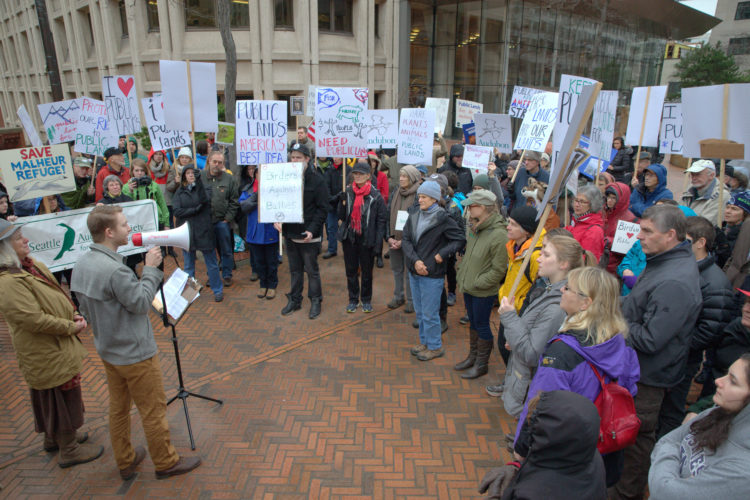We have much more to do and your continued support is needed now more than ever.
Affiliate of the Week: Conservation Northwest

In honor of our 80th Anniversary celebration throughout 2016, the National Wildlife Federation is recognizing each of our Affiliate Partners in a special “Affiliate of the Week” blog series that showcases the dedicated conservation efforts taking place across the country each day. This week we celebrate our Washington state affiliate, Conservation Northwest, and their commitment to wildlife.
WHO WE ARE
“Keeping the Northwest wild” since 1989, Conservation Northwest protects old-growth forests and other wild lands, connects large landscapes and vital habitats, and restores native wildlife. They operate throughout Washington state and southern British Columbia, with offices in Bellingham and Seattle, and staff working in communities including Olympia, Twisp, Omak, Colville, Vancouver and Whistler.
Conservation Northwest represents over 4,000 dues-paying members. Their conservation community also includes over 10,000 activists, supporters and online followers. From the halls of their state capitol to the forests and fields of Eastern Washington to the mountains of southern B.C., they are a local voice for conserving wildlands and amazing wildlife.
We are so pleased that Conservation Northwest joined the National Wildlife Federation affiliate family in early 2016.
WHAT WE DO

Their M.O. is simple: connect the big landscapes, protect the most vulnerable wildlife, and conserve our natural heritage for future generations. Creative and effective, they have protected hundreds of thousands of acres of wildlands and habitat, supported the recovery of threatened animal species such as grizzly bears, wolves, and caribou, and touched thousands of lives throughout the greater Northwest.
Conservationists know Conservation Northwest for being tenacious yet pragmatic. They work with diverse stakeholders and engage in open dialogue and genuine listening to find common ground. They collaboratively reach solutions to challenging issues including wildlands conservation, endangered species recovery, wilderness designation, and sustainable natural resource management.
PROTECTING WILDLANDS
Old-growth rainforests, shrub-steppe grasslands, glaciated mountains and other wild places are the heart of the Great Northwest. Healthy watersheds, mature forests and expansive grasslands go hand-in-hand with healthy, prosperous communities and abundant wildlife.
Conservation Northwest was one of the first conservation groups to recognize the power of ecological forest restoration and community collaboration. Through their Forest Field Program, these tools help restore and protect forests and other wildlands while also promoting sustainable forestry and benefiting local communities.

Since 1989, CNW staff have worked to oppose risky natural resource management, from old-growth timber sales and expanding off-road vehicle use, to promoting better wildfire policies and protecting important watersheds and wilderness. At the same time, they collaborate with forestry, government agencies, sportsmen, elected officials and other groups to achieve lasting solutions that benefit multiple stakeholders.
CONNECTING HABITAT
Animals are on the move in the Northwest. Species such as elk and deer travel daily for food, fish and other wildlife embark on seasonal migrations as conditions change, and shift territories as populations claim new ground to call home. Providing a connected network of habitats to allow for the safe movement of wildlife is called
Habitat connectivity becomes even more important as the climate changes and animals move to adapt to a changing environment. Conservation Northwest has successfully connected habitat from the Washington Coast to the British Columbia Rockies, including connecting the north and central Cascades. A few of their connectivity programs include:
- I-90 Wildlife Corridor Campaign: Restoring habitat and connectivity around Snoqualmie Pass through conservation, restoration and wildlife crossings.
- Working for Wildlife Initiative: Connecting the Cascades to the Columbia Highlands through the Okanogan Valley and surrounding highlands in partnership with the National Fish and Wildlife Foundation and other allies.
- Columbia Highlands Initiative: Conserving important habitat between the Cascades and the Rockies in the Kettle Range and Selkirk Mountains through private lands conservation, forest management, and wildlands protections.
- Coast to Cascades Grizzly Bear Initiative: Linking British Columbia’s Coast Range with the North Cascades for grizzly bears and other species.

Over the next five years, Conservation Northwest will introduce two new programs to conserve wild places, retain working lands, and connect habitat between the South Cascades and the Olympic Peninsula, and between the Cascade Mountains and the arid interior Columbia Basin.
After more than a decade of leadership and advocacy, they recently celebrated monumental progress in advancing wildlife crossings under and over Interstate 90 near Washington’s Snoqualmie Pass. Learn more in this video: Connecting Wildlife Habitat Under and Over I-90.
RESTORING WILDLIFE
Diverse animal species make the Northwest region rich and vibrant. Thriving wildlife signals healthy forests and watersheds. Conservation Northwest champions iconic native wildlife in the region, from gray wolves, wolverines, Canada lynx and grizzly bears, to marbled murrelets, mountain caribou and fishers.
In collaboration with scientists, government agencies, ranchers, landowners and other partners, the organization also leads several projects to restore native wildlife or support recovery and coexistence with endangered species.
Since 2008, they have worked with the National Park Service and Washington Department of Fish and Wildlife to restore fishers, cat-sized members of the weasel family (think of them as “tree wolverines”) to the Olympic and Cascade Mountains. In December 2016, they will release the first fishers to return to Mount Rainier National Park in more than 80 years.

In their Range Rider Pilot Project, they partner with Eastern Washington ranchers each year demonstrating the effectiveness of non-lethal measures in deterring or reducing conflicts where wolves and livestock overlap in Washington state. This helps reduce conflicts with predators and builds social tolerance for their recovery in the state. Conservation Northwest also sits on Washington’s stakeholder Wolf Advisory Group and has been closely involved in policymaking around wolf conservation and management for more than a decade.
Their Reward Fund to Help Stop Poaching, annual WildLinks Conference, and Citizen Wildlife Monitoring Project (one of the largest citizen science volunteer programs in North America) also support wildlife and a wilder Northwest.
MAKING A NATIONAL IMPACT
With increasing wildfires, changes in habitat conditions, and reduced snowpack and water resources, it is important that local, regional and national organizations work together for a healthy, wild future. While Conservation Northwest is local, they think big.
Whether it is working with elected leaders in Washington, D.C., coordinating with natural resource practitioners across the Northwest and Western Canada to support durable solutions, or partnering with effective groups like the National Wildlife Federation, they are advocates for the long-term conservation of wild places and wildlife.

Want to take action? For over a decade their WILD NW Action Alerts have provided people in the region with notices and simple tools to comment, speak up or take action on important conservation issues. Sign up for their WILD NW list at: www.conservationnw.org/sign-up
GET INVOLVED
Become a Conservation Northwest member to support their work, get invites to special events and volunteer opportunities, and receive their full-color print newsletter three times a year.
CONNECT WITH CNW
Check out their organization video, Keeping the Northwest Wild, to learn more. They also have other videos on their work for I-90 Wildlife Crossings, grizzly bear recovery, fisher reintroduction, public lands and other issues available on YouTube and Facebook.
Also connect with Conservation Northwest to get their latest news and keep up with their conservation efforts through Facebook, Twitter, Instagram, Soundcloud, or by visiting their website.






















